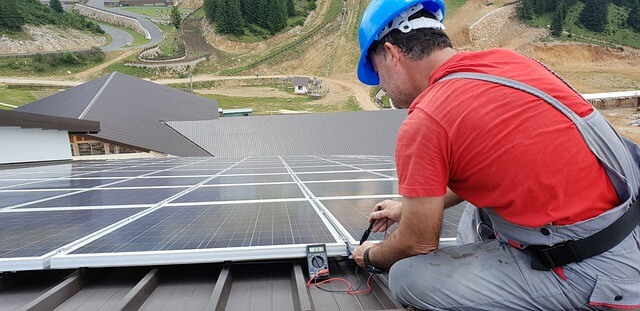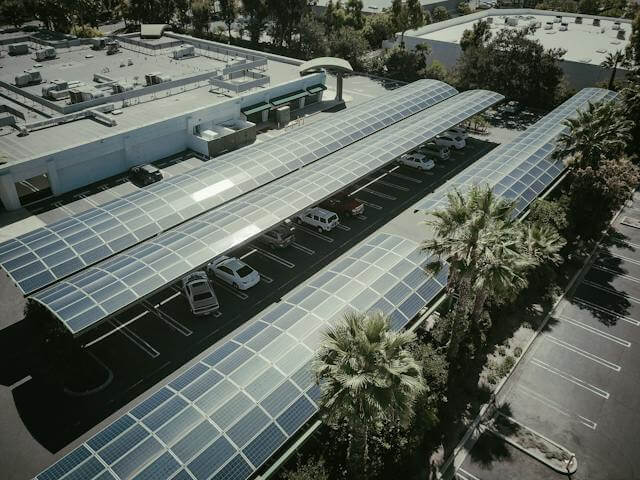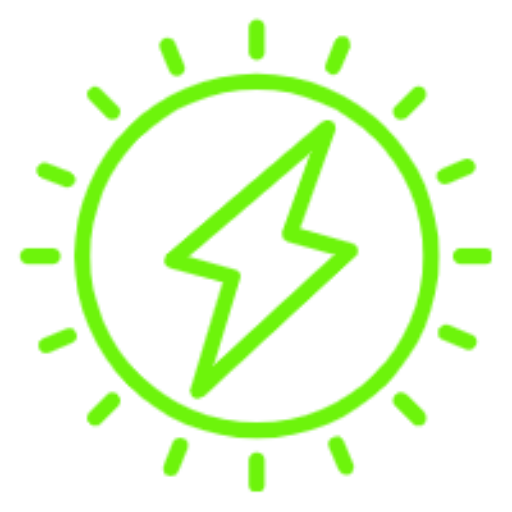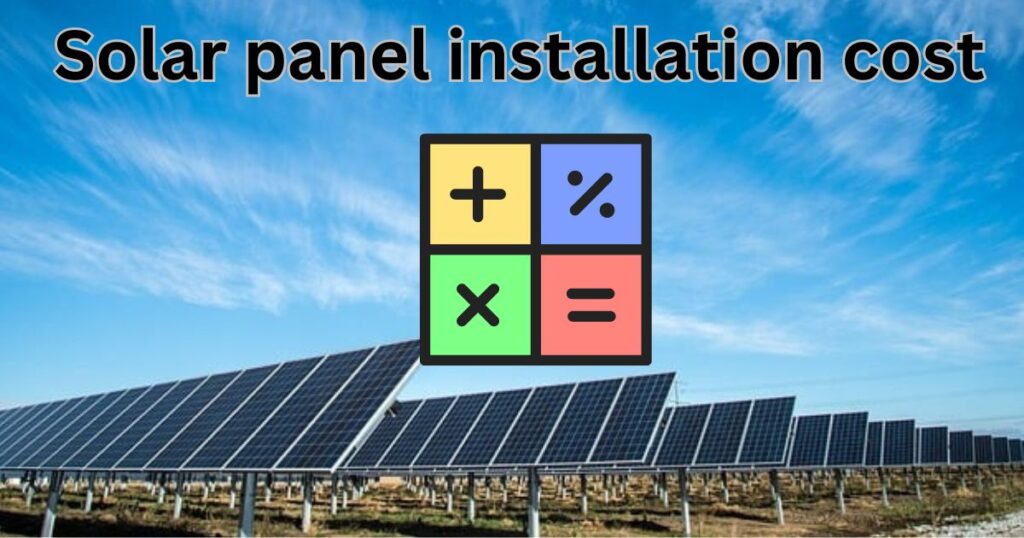Last updated on June 18th, 2024 at 11:06 pm
Solar panel installation cost is at the forefront of the minds of renewable energy enthusiasts aiming to power their homes and businesses with solar energy. The reality is, solar panel installation doesn’t come cheap.
To put it into perspective, an average American home consumes around 990 kWh per month. To meet this energy demand, the installation cost for solar panels is estimated to be almost $28,000 encompasses not only the solar panels but also the inverter, hardware, and labor costs.
If you’ve ever wondered about the expense of going solar, you’re in the right place. In this article, we promise to unravel the complexities, break down the costs, and empower you with the knowledge to make a well-informed decision.
Solar Panel Installation Cost Calculator
(*) Required field
Number of solar panels needed*:
If you don't know the number of solar panels you need, Click here to calculate.
Wattage of the solar panels (in Watt)*:
Cost of solar panels per watt (in USD)*:
Click here to convert your native currency to USD.
2. The total installation cost hinges significantly on factors like the solar panel system size, the wattage of the panels, and the cost per watt.
3. The type of solar panels and the installation location are also pivotal factors affecting the overall solar panel installation cost.
Solar panel system overview
A solar panel system, also known as a photovoltaic (PV) system, is a setup designed to harness sunlight and convert it into electricity for various applications. There are two main types of solar panel systems: on-grid (grid-tied) and off-grid:
On-Grid Solar Panel System:
On-grid systems are connected to the local electricity grid. They generate electricity during the day and feed any excess power back into the grid, earning credits. At night or during periods of low sunlight, electricity is drawn from the grid.
Off-Grid Solar Panel System
Off-grid systems operate independently of the utility grid. They are suitable for remote areas where grid connection is not feasible, relying on energy storage systems like batteries to supply power during periods without sunlight.
Components of a solar panel system
Solar Panels
Photovoltaic modules composed of solar cells that convert sunlight into DC electricity. There are three main types of solar panels, monocrystalline, polycrystalline, and thin-film.
Inverter
Converts DC electricity produced by solar panels into AC electricity used in homes and businesses.
Batteries (for Off-Grid Systems)
Energy storage devices that store excess electricity for later use when sunlight is not available.
Charge controller
A charge controller is an essential component in most solar power systems, particularly those with battery storage. The primary function of a charge controller is to regulate the voltage and current from solar panels to prevent overcharging of batteries.
Mounting structures
Support systems that hold solar panels in place, ensuring proper orientation and tilt for optimal sunlight exposure. There are three main types of mounting structures, roof-mounted, ground-mounted, and tracking systems.
Solar panel accessories
Mounting Brackets
Brackets secure solar panels to mounting structures, providing stability and resistance to environmental forces.
DC and AC Wires
Electrical cables that carry direct current (DC) from solar panels to inverters and alternating current (AC) from inverters to the electrical panel.
MC4 Connectors
Standard connectors for photovoltaic solar panels, ensuring secure and weather-resistant connections between panels and wiring.
DC Distribution Box (DCDB)
Electrical enclosure that houses components like fuses, breakers, and diodes, managing the distribution of DC power from solar panels.
AC Distribution Box (ACDB):
Electrical enclosure that houses components like breakers and disconnects, managing the distribution of AC power from the inverter to the electrical panel.
Earthing Kit
Ensures that the solar panel system is properly grounded, protecting against electrical faults and lightning strikes.
Monitoring Systems
Devices that track and display real-time and historical data on energy production, system performance, and potential issues.
Combiner Boxes
Electrical enclosures that combine the output from multiple strings of solar panels before it enters the inverter.
Disconnect Switches
Safety devices that allow for the isolation of the solar panel system from the grid or other components for maintenance or emergency purposes.

Solar panel installation cost: Price breakdown
Use the calculator at the beginning of the article to estimate your solar panel installation cost. Now, let’s understand with an example how to estimate your solar panel installation cost.
Let’s suppose you live in California, and your monthly energy consumption is 1000 kWh/month.
Peak sun hours in California is 5.4 hours/day.
Therefore, you would need 22 solar panels of 350 W each to meet your monthly energy needs of 1000 kWh. This translates to a solar panel system with a capacity of (350 × 22) W or 7,700 W or 7.7 kW.
Click hereto calculate how many solar panels you need.
Solar panel cost per Watt in California is $2.86.
Click hereto know the cost of solar panels per Watt in every states of the United States.
The cost of 22 solar panels would be calculated as follows: 22 × 350 × $2.86 = $22,022.
Mounting accessories, such as wiring, racks and brackets, cost $150 per solar panel. Therefore, the total cost of mounting accessories for 22 panels is $150 × 22 = $3,300.
The inverter cost is $0.20 per watt, which means you would need an inverter worth (7,700 W × $0.20) = $1,540.
Labor cost is 10% of the solar panel cost, which is 10% of $22,022 or $2,202.
The total installation cost is calculated as follows: Solar panel cost ($22,022) + Mounting accessories cost ($3,300) + Inverter cost ($1,540) + Labor cost ($2,202) = $29,064.20.
After applying the 30% federal solar tax credit, the final cost of the solar panel installation will be 70% of $29,064.20, which is $20,344.94.
If you include a battery for energy storage, with a cost of $15,000, then the total installation cost will be $44,064.20, and after the tax credit, it will be $30,844.94.

Factors influencing solar panel installation cost
System Size and Energy Needs
The size of a solar panel system is determined by the energy needs of the user. It’s crucial to conduct a thorough energy assessment to understand how much electricity is required.
A larger system, capable of producing more energy, will naturally involve more solar panels, inverters, and associated components. This directly affects the installation costs, making it essential to strike a balance between system size and anticipated energy consumption.
Location
Geographical location plays a pivotal role in solar panel efficiency. Regions with ample sunlight receive more solar irradiance, resulting in higher energy production. Factors such as potential shading from nearby structures or vegetation and local climate conditions (including temperature and humidity) impact system performance. A detailed analysis of your location’s solar potential ensures optimal system design and accurate cost estimation.
Quality and Type of Solar Panels
The choice between solar panel types involves a trade-off between efficiency and upfront costs. Monocrystalline panels, known for their high efficiency, generally come with a higher initial price tag compared to alternatives like polycrystalline or thin-film panels. Assessing your budget and energy production goals is essential in selecting the most cost-effective and efficient solar panels for your specific needs.
Inverter Technology
Solar inverters are critical in converting DC electricity generated by solar panels into usable AC electricity. Advanced technologies like microinverters or power optimizers, while potentially increasing upfront costs, can enhance the overall system’s performance. These technologies optimize the output of individual panels, mitigating the impact of shading or panel-level variations and maximizing energy harvest.
Mounting Structure and Design
The mounting structure, whether installed on the roof or ground, significantly influences installation costs. Roof-mounted systems might require additional structural modifications, while ground-mounted systems often involve more extensive installation efforts.
Systems with sun-tracking mechanisms, although more expensive, can increase energy production by orienting panels toward the sun throughout the day. Careful consideration of mounting options is crucial for both efficiency and cost-effectiveness.
Labor and Installation Complexity
Labor costs are influenced by the complexity of the installation process. Factors such as roof configurations, the need for electrical work, and local permitting processes can impact the overall installation expenses.
Complex installations may require specialized expertise, contributing to higher labor costs. Understanding the local regulations and potential challenges associated with the installation site is essential for accurate cost assessments.
Conclusions!
In the quest for sustainable and cost-effective energy solutions, understanding how to calculate solar panel installation costs is paramount. As we’ve navigated through the intricacies of this process, it becomes clear that several factors intricately shape the financial landscape of going solar.
From sizing your system to considering your geographical location, the type of solar panels chosen, and the intricacies of inverter technology, each decision influences the overall investment. The significance of labor, permitting, and additional equipment costs highlights the need for a comprehensive approach to cost estimation.

